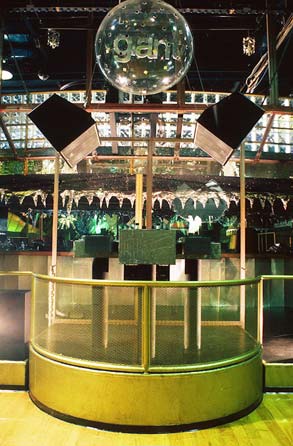Design Philosophy | Design Portfolio | Installations by JK Sound

RUBY SKYE | SLIDE | CIRCUS DISCO
Club Systems International Nominates JK SOUND for Best Sound Category
Circus Disco on Santa Monica Boulevard, Hollywood, California.
When this storied venue suddenly became the hottest spot in LA’s club scene, its decade old sound system couldn’t stand the heat so, JK Sound was called upon to propose a solution: the installation of EAW’s new Avalon dance music speakers. The result is a world-class system, which opened to Rave reviews.
Six EAW Avalon Series DC1's surround the dance floor.
But these speakers are more than they appear to be. JK Sound removed the factory equipped internal cross over network, so that the cabinet could be tri-amp, rather then the standard bi-amped. This allows more precise control over pahse and time at the crucial hi/mid crossover point. We also upgraded the high frequency driver to EAW’s top of the line unit. This driver features extremely low distortion and increased efficiency.
Texas Headphones
EAW DC4 speakers, one for each ear, coupled with an XTA224 processor and 3000 watts of bi-amplified power help the DJ feel it. While these speakers are enough sound for many clubs, they were necessary to keep up with the powerful main system.
A cube of Sub-bass
16 EAW DCS2's are arranged in cubes of four to deliver tremendous bass. After experimenting with different arrays of subwoofers, this cube configuration had noticeably lower distortion and higher efficiency due to the increased size and symmetrical shape of the combined horn mouth.
Four EAW DCT’s tweeter arrays are hung in a row down the center of the dance floor. These 360-degree super tweeters are crossed into the system above 8000 hertz and are primarily used as a special effect.
The first of it’s kind
JK Sound installed QSC's Q’s Control amplification monitoring system, the first in a nightclub. This system connects all of the power amplifiers to a computer through an Ethernet port. It allows the system engineer to view real time the temperature of each amplifier in the system, the ohm load it is driving, the RMS output, and the number and times that an amplifier has reached clipping or maximum output in a given period of time. With this information the system engineer may be able to tell if there is a component in the system which is on the verge of failure, or if there is a the system is being overdriven.
